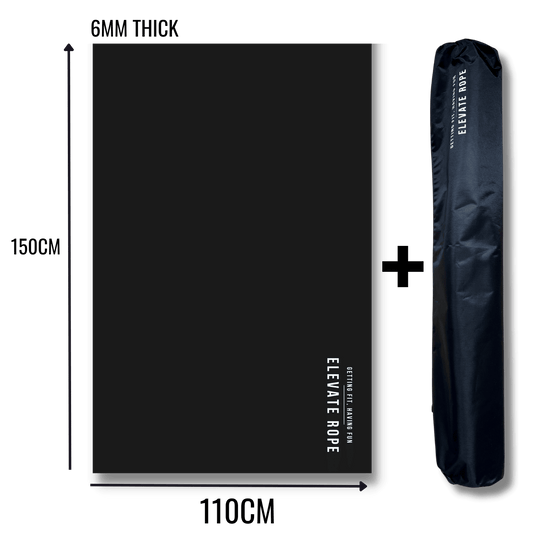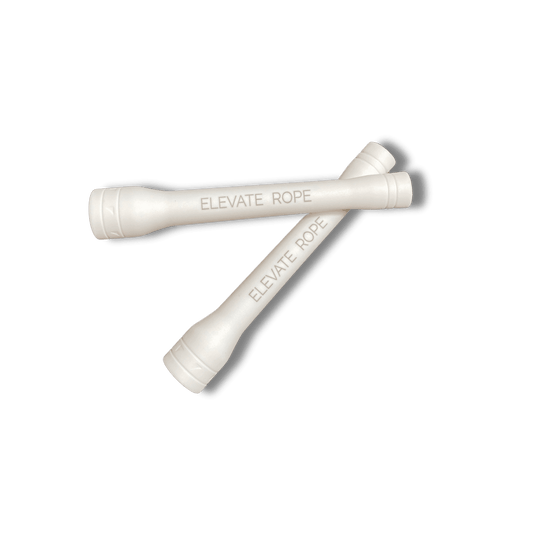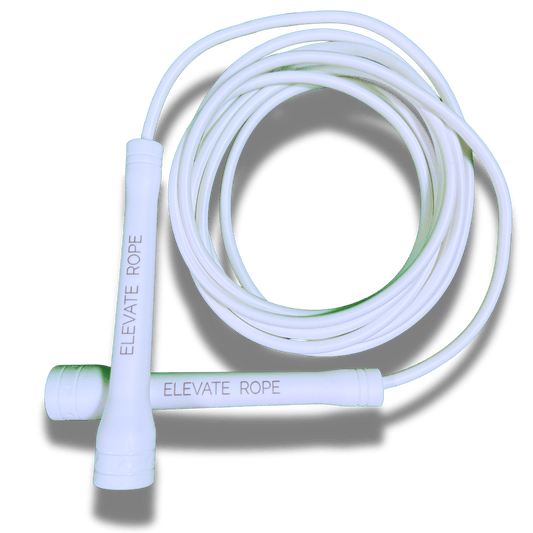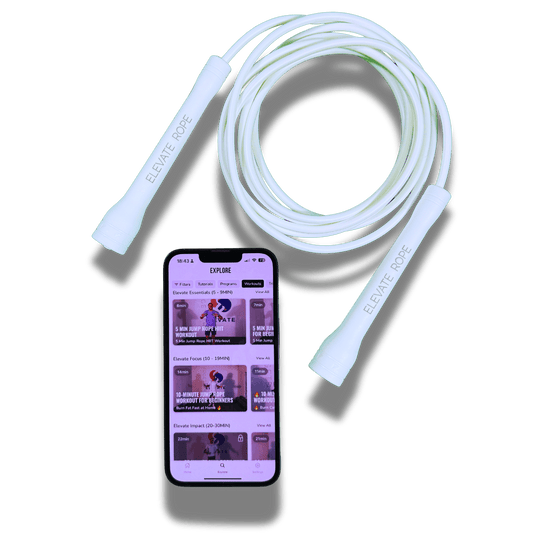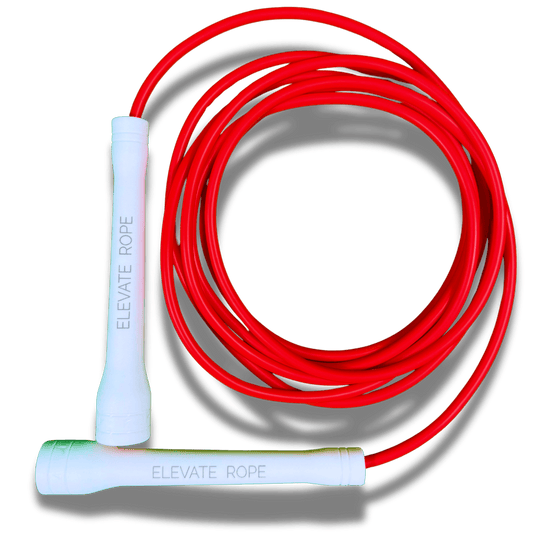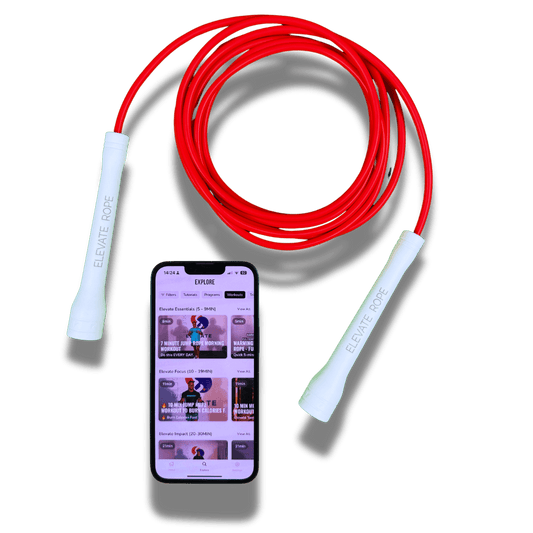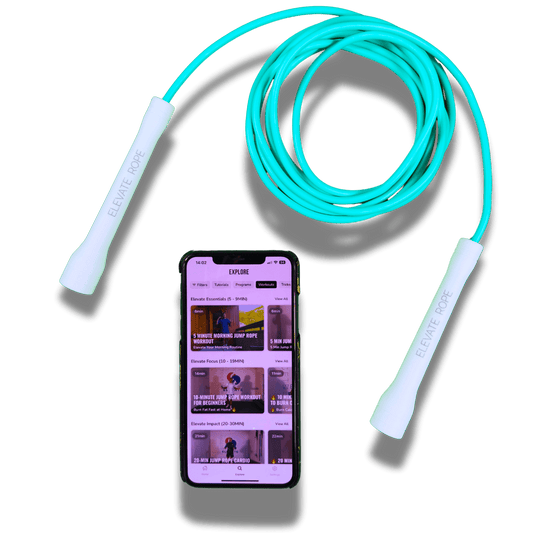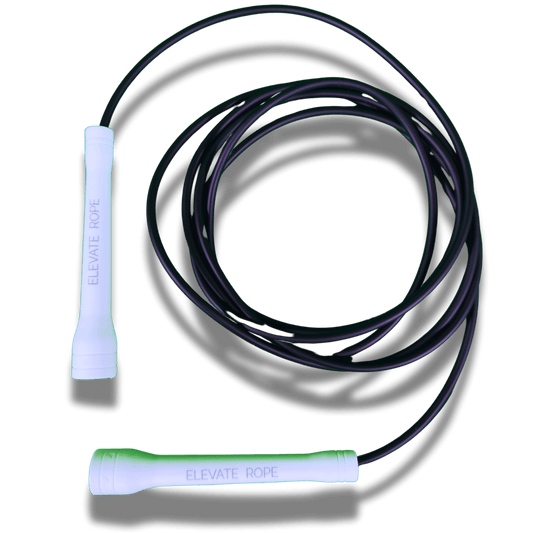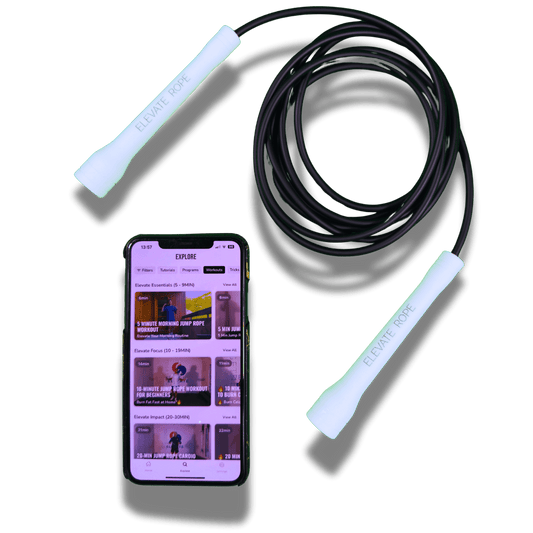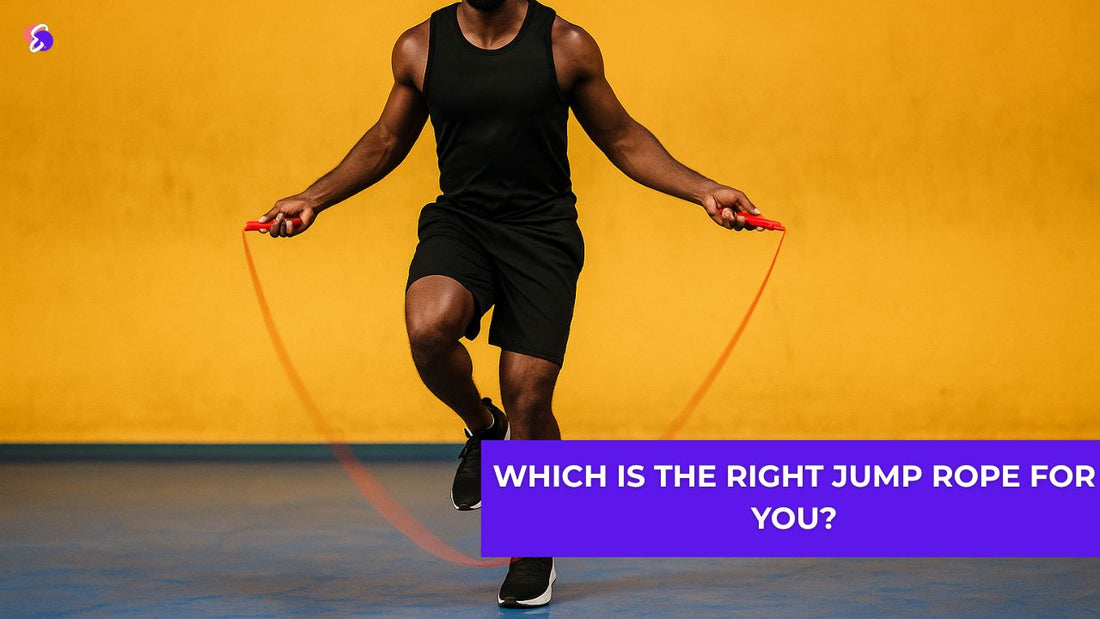Choosing a jump rope might seem simple — it’s just a rope, right? But once you dive in, you’ll realize there are many different types of ropes, and the one you choose can completely change your experience. Pick the wrong one, and you’ll trip, get frustrated, or lose motivation. Pick the right one, and everything flows: rhythm, consistency, and results.
This guide will help you discover the best ropes for you by breaking down the most popular options, comparing their strengths, and showing you how to align your rope choice with your goals.

Why the Right Rope Matters
When people ask about the best ropes for you , they often assume any jump rope will do the job. But the truth is: the rope you choose can make or break your training experience.
Think about it:
- The wrong rope can make you trip more often, feel frustrated, and even lose motivation.
- The right rope gives you rhythm, flow, and progress — which means you’ll actually enjoy your workouts and keep coming back.
Jump rope isn’t just cardio; it’s a skill. And skills improve faster when your equipment matches your level and goals. Beginners need a rope that teaches rhythm, advanced athletes need speed for efficiency, and freestyle jumpers need control for tricks.
That’s why choosing the best ropes for you is not about hype or trend — it’s about alignment. When your rope matches your goals, you’ll:
- Build consistency faster.
- Stay motivated, because the rope feels “right.”
- See quicker results, whether it’s weight loss, endurance, or learning tricks.
Types of Jump Ropes
When people search for the best ropes that they can use, what they’re really asking is: Which type of rope fits my goals, my level, and my style of training? Not all ropes are created equal, and each comes with unique strengths. Let’s break them down one by one.
Beaded Rope
A beaded rope is made from a nylon cord with durable plastic beads threaded along its length. These beads add weight and create a satisfying “click” each time they hit the ground.
Key Features
- Weight: Slightly heavier than other ropes, usually 3–6 oz.
- Feedback: Audible sound and strong tactile feedback, making it easier to learn rhythm.
- Durability: Excellent for outdoor use — the beads protect the cord from wear.
- Control: More forgiving, ideal for building confidence.
Best For:
- Beginners who want to learn timing and coordination.
- Freestyle jumpers practicing tricks like crosses, releases, and multiples.
- Anyone who enjoys a rope they can “feel” and control.
👉 If you’re just starting out, a beaded rope is often considered one of the best ropes for you because it makes learning so much easier.
Speed Rope
Speed ropes are designed for performance and intensity. They’re usually made from lightweight PVC or coated wire and are built for fast rotations.
Key Features
- Weight: Very light, often 1–3 oz.
- Feedback: Minimal; requires body awareness to control.
- Durability: Best on smooth indoor surfaces. Using them on concrete quickly wears them out.
- Control: High speed but less forgiving, meaning mistakes happen faster.
Best For:
- Intermediate and advanced jumpers.
- CrossFit athletes or anyone working on double unders.
- Short, high-intensity workouts for conditioning and calorie burn.
👉 If your focus is on speed and efficiency, a speed rope could be the best rope for you.

Heavy Rope
Weighted ropes add resistance to your workouts, either through heavier handles or a thicker, heavier cord.
Key Features
- Weight: Significantly heavier (0.5–2 lbs).
- Feedback: Strong tactile feedback; you’ll feel every rotation.
- Durability: Good for both indoor and outdoor use, depending on material.
- Control: Slower rotations but much more resistance.
Best For:
- Athletes wanting to combine cardio with strength training.
- People focusing on fat loss and calorie burn.
- Building endurance and upper body strength.
👉 If you want to feel a burn quickly, heavy ropes may be the best ropes for you
Long handles rope (Freestyle Rope)
These ropes are built for tricks, not just workouts. The extended handles give more control for crosses, releases, and advanced freestyle moves.
Key Features
- Weight: Moderate; handle length is the defining feature.
- Feedback: Enough control for tricks, not ideal for pure speed.
- Durability: Depends on rope type; often designed for indoor training.
- Control: High precision for freestyle jumping.
Best For:
- Trick jumpers, performers, and anyone who wants creativity in training.
- Athletes who compete in freestyle jump rope events.
👉 If creativity is your motivation, the long handles rope might be the best rope for you.
Beaded vs Speed Rope: Core Comparison
Now that you know the main types of jump ropes, let’s zoom in on the two most popular choices: beaded ropes and speed ropes. These are often the starting point for beginners and fitness enthusiasts when deciding for the best ropes.
While both ropes can give you a great workout, they feel completely different in your hands — and one may fit your goals much better than the other.
Side-by-Side Comparison
| Feature | Beaded Rope | Speed Rope |
| Weight | Medium-heavy (3–6 oz) | Very light (1–3 oz) |
| Feedback | Strong tactile + audible “click” with each rotation | Minimal feedback, relies on body awareness |
| Durability | Excellent outdoors (beads protect cord) | Best indoors (wears quickly on concrete) |
| Control | Easy to control, forgiving for mistakes | Less forgiving, requires precision |
| Best For | Beginners, freestyle tricks, rhythm training | Speed work, double unders, HIIT cardio |
| Learning Curve | Beginner-friendly, smooth progress | Steeper, harder for new jumpers |
What This Means for You
- Beaded Rope Strengths: If you’re starting out or want to explore freestyle, the beaded rope is forgiving, durable, and rhythm-building. For many beginners, this makes it one of the best ropes for you.
- Speed Rope Strengths: If your goal is high-intensity cardio or mastering double unders, the speed rope is unmatched. It’s lightweight, efficient, and perfect for building endurance.
👉 In short: if you want control and confidence, start with a beaded rope. If you want speed and efficiency, choose a speed rope.
Training Goals & the Right Rope
Not every rope works for every purpose. The secret is matching your fitness goals with the rope that makes achieving them easier. Here’s how to decide:
🏋️ Learning the Basics
If you’re just starting out, rhythm and timing are everything. A beaded rope gives you feedback with every rotation, helping you stay consistent and reduce frustration.
👉 Best choice: Beaded rope
🔄 Freestyle & Tricks
Love the idea of crossovers, releases, or freestyle combos? A beaded rope (or a freestyle rope with longer handles) gives you the control and weight you need for smooth, creative movements.
👉 Best choice: Beaded rope or freestyle rope
⚡ Speed & Double Unders
If your goal is efficiency, double unders, or HIIT workouts, a speed rope is unmatched. Its lightweight design spins quickly, allowing for intense cardio in a short amount of time.
👉 Best choice: Speed rope
👉 Want to see it in action? Watch our Speed Rope Double Unders Tutorial on YouTube.
🔥 Weight Loss & Conditioning
Both speed ropes and weighted ropes shine here. A speed rope keeps your heart rate high, while a weighted rope adds resistance to burn more calories per minute.
👉 Best choice: Speed rope or weighted rope
💪 Strength & Endurance
Want to combine cardio with strength? A weighted rope challenges your upper body while keeping your heart rate up, making it perfect for short, high-impact sessions.
👉 Best choice: Weighted rope
🎯 General Fitness & Fun
If you just want to stay active, build consistency, and enjoy the process, many athletes keep two ropes: a beaded rope for rhythm and freestyle, and a speed rope for quick cardio.
👉 Best choice: Beaded + speed rope combo
Pros & Cons of Each Rope
Every rope has strengths and trade-offs. Here’s a quick overview to help you weigh your options.
✅ Beaded Rope
Pros
- Beginner-friendly with strong rhythm feedback
- Durable for outdoor training
- Great for freestyle tricks and creativity
- Builds coordination and timing
Cons
- Slightly heavier, making endurance sessions more challenging
- Slower for advanced moves like double unders
⚡ Speed Rope
Pros
- Extremely lightweight and fast
- Ideal for double unders and HIIT workouts
- Great for building conditioning and calorie burn
Cons
- Less feedback, harder for beginners
- Not durable on rough outdoor surfaces
💪 Weighted Rope
Pros
- Adds resistance for strength and cardio in one workout
- Boosts calorie burn in shorter sessions
- Excellent for building endurance and grip strength
Cons
- Fatiguing if overused
- Requires more recovery time between sessions
🔄 Freestyle Rope (Long Handles)
Pros
- Perfect for advanced tricks, crosses, and releases
- Provides better control in freestyle routines
Cons
- Less effective for conditioning
- Learning curve for complete beginners
👉 By understanding the strengths and weaknesses of each rope, you can better align your choice with your goals and training style.
Staying Consistent: Practical Motivation Tips
Choosing the right rope is only half the battle — the other half is actually using it regularly. Motivation comes and goes, but consistency is what creates results. Here are five simple ways to make sure your rope doesn’t just sit in the corner.
1. Keep It Visible
Leave your rope somewhere you see it every day — by your desk, near the TV, or in the hallway. A visible cue is a daily reminder to get moving.
2. Pair It With Small Habits
Attach your workout to something you already do. For example: jump rope for 5 minutes right after brushing your teeth in the morning or before dinner.
3. Redefine “Success”
A workout doesn’t have to be long to count. Even a 5–10 minute session gives you a win, builds confidence, and makes it easier to come back the next day.

4. Make It Fun
Switch things up: try a new variation, put on your favorite playlist, or follow along with a quick workout video. Variety keeps your routine fresh.
5. Celebrate Small Wins
Track your streaks, log the days you train, or reward yourself when you hit milestones. Small celebrations make progress feel tangible.
👉 Remember: the best rope is the one you’ll actually use — and these habits help you stay consistent long after the first burst of motivation fades.
Conclusion: Find the Rope That Fits You
Choosing the right rope isn’t about following a trend — it’s about finding the one that fits your level, your goals, and your lifestyle.
- Want to master rhythm and tricks? A beaded rope is your best friend.
- Want fast conditioning and double unders? Go for a speed rope.
- Want cardio and strength in one? Try a weighted rope.
- Want creativity and advanced moves? A freestyle rope shines.
At the end of the day, the best rope is the one that keeps you moving. Pick the one that excites you, start small, and stay consistent. That’s where real progress begins.
👉 Want to understand why short, consistent workouts are so effective? Read this Harvard Health article on exercise benefits for deeper insights.
